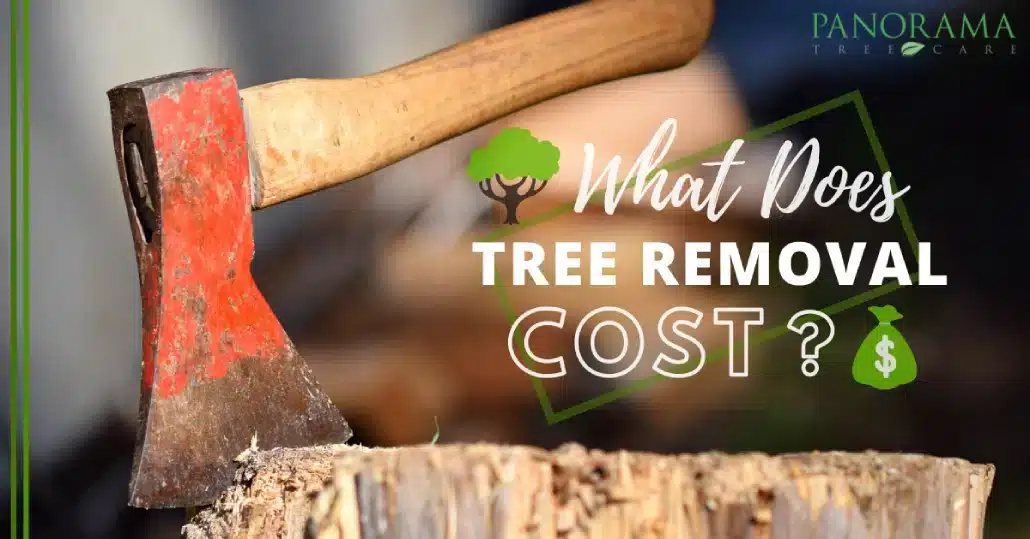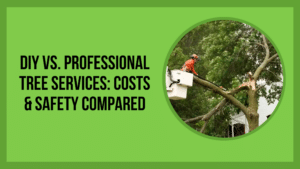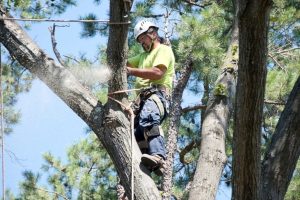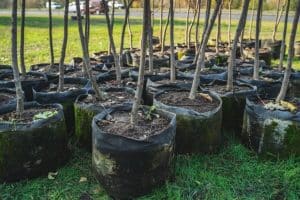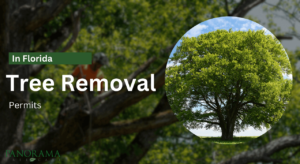Planning to remove a tree from your property in the Tampa Bay area and wondering what it might cost?
Tree removal costs in Tampa can vary depending on several factors such as size, type, and location. If you’re looking for trusted, affordable tree removal in Tampa, Panorama Tree Service offers expert assessments and fair pricing for all your needs.
This guide breaks down the key cost drivers Tampa homeowners should be aware of when budgeting for tree removal.
Whether you’re dealing with a dead tree, storm damage, or simply clearing space, understanding these pricing insights can help you make more informed decisions.
Factors Influencing Tree Removal Costs
Removing a tree from your property isn’t a one-size-fits-all service. Several key elements play into what you’ll pay, and understanding these factors can help you estimate your budget more accurately. Below, we explore the biggest variables that impact tree removal pricing in the Tampa Bay area.
Tree Height & Size
Larger trees require more manpower, time, and specialized equipment—making size the #1 factor influencing cost. For instance:
- Small trees (under 30 ft) are usually straightforward and cost between $100–$500.
- Medium trees (30–60 ft) may require climbing gear or a bucket truck and cost between $300–$1,200.
- Large trees (over 60 ft) often need cranes or multi-day projects, and pricing can go from $1,000 to $2,000+.
The more expansive the root system and branch spread, the more time and safety precautions are needed—driving up the price.
Tree Species
Some trees are easier (and cheaper) to remove than others due to wood hardness, branch density, or trunk complexity. Here’s how some common Tampa trees compare:
- Palm Trees – Typically easier to remove due to their narrow trunk and shallow roots. Removal ranges from $200 to $900.
- Oak Trees – Denser wood and widespread roots make these more labor-intensive. Expect $400 to $1,500+.
- Pine Trees – Often very tall with deep root systems. These removals can cost $500 to $1,800, depending on height and lean.
Additionally, some tree wood can be reused or sold, potentially reducing disposal costs.
Accessibility & Location on Property
A tree’s position on your property matters more than most homeowners realize. Trees close to structures, fences, or power lines require precision and extra safety measures.
- Hard-to-reach trees may need cranes or bucket trucks.
- Obstacles like fences, patios, or narrow side yards can add to the labor cost.
In contrast, easily accessible trees in open yards are quicker and cheaper to remove.
Tree Location & Site Accessibility
Where your tree is located on your property can drastically impact both removal strategy and pricing.
For example, trees positioned close to your home, garage, or power lines require extra caution and may involve specialized rigging or crane equipment. In Tampa, where many lots have tight side yards or overhead utility lines, this can be a common challenge.
Other factors like fences, patios, pools, or limited driveway space can restrict access and increase the labor involved.
In contrast, trees that are freestanding in open lawns are faster and safer to remove—often resulting in lower overall costs.
The complexity of a job can also depend on the step-by-step tree removal process, especially when dealing with hazardous or large trees. Understanding this can help explain why some jobs cost significantly more than others.
Stump Removal & Grinding in Tampa: What to Know
Once a tree is taken down, what’s left behind can be more than just an eyesore — it can be a hazard or attract unwanted pests. That’s why stump grinding or full removal is often the final but essential phase of the job.
Why Stump Removal Is More Than Cosmetic
Safety Hazards: Exposed stumps pose tripping risks, especially in family yards or high-traffic spots.
Pest Prevention: In Florida’s humid climate, rotting stumps attract termites, ants, and wood-boring beetles — which may migrate to nearby trees or your home.
Better Land Use: Whether you’re installing sod, replanting, or laying hardscape, that stump gets in the way. Grinding it down opens up usable space again.
What Affects the Cost of Stump Grinding or Removal in Tampa?
- Stump Size – Larger diameter = more time, heavier equipment.
- Tree Type & Age – Older and softer stumps grind easier (palm), while hardwoods like oak are more labor-intensive.
- Accessibility – Is the stump near a fence, pool, or tight corner? That affects the gear needed.
- Root Spread – Some trees have wide, deep roots (like pine), which may require deeper grinding or full excavation.
💡 Average cost in Tampa ranges from $60 to $350 depending on these factors.
While stump grinding is generally less expensive and quicker, complete removal can prevent future landscaping issues. For more details on the cost difference between stump grinding and full stump removal, check out our in-depth comparison.
Choosing Panorama Tree Care
We’ve helped hundreds of homeowners across Tampa remove eyesore stumps safely, affordably, and quickly. Our licensed arborists use professional-grade equipment to grind or extract stumps without damaging your lawn or nearby structures.
Whether it’s one small stump or a post-hurricane cleanup, we’ll walk you through the best option for your property.
Tree removal isn’t one-size-fits-all. In Tampa, factors like tree species, height, location on your property, and even local regulations can all impact the final cost. But here’s the good news — you don’t have to guess.
If you’re planning to remove a tree on your property, it’s important to understand the potential expenses involved. As an affordable tree removal company, we deliver fair pricing and dependable service across Tampa neighborhoods.
While this guide outlines the factors affecting cost, our dedicated tree removal service provides hands-on support and accurate estimates tailored to your situation.
Ready to remove a tree safely and affordably? Get your personalized quote today from our certified Tampa tree specialists.

